As responsible travelers evolve, so do the stories we share.
This article is part of our living archive — trusted content we continue to care for.
First published on August 22, 2023 • Last updated on March 12, 2025.
Not long ago, I thought my hiking days were done. When I was diagnosed with Multiple Sclerosis (MS), I was struggling with my health in multiple ways, no pun intended. I found it difficult to walk without limping, heat sapped my energy in ways I never expected, and I was downright depressed. Depression makes it almost impossible to plan a hike. Especially when you can’t figure out how to get up and face the next day.
So when I write these tips for hiking with MS, I come from a place of understanding. I know that everyone’s autoimmune disease presents differently. My suggestions might not work for you. However, I hope they do!
Tip #1 – Set Manageable Goals
When I first started tackling my MS, I saw myself in a fight with my own body. Like many US Americans, I was raised to believe No Pain, No Gain when it comes to physical health. So pushing my limits was a part of my workout vocabulary. Little did I know that I was actually making it harder for my body to work.
When we have MS, our bodies want exercise but only in small doses, especially when we are trying to learn how to manage our symptoms. We have to learn to be kind to ourselves.
For me, that meant setting manageable goals. For a while, it meant setting aside excursions like the crater rim trail at Laguna Quilotoa and replacing them with shorter, less strenuous options. Maybe the hummingbird garden route at Yanachocha instead? Or, on my worst days, a walk around the block. I’ve learned to meet myself where I am at.
I’ve also learned to add difficulty in manageable bites. If I’m only capable of walking around the block, I try to do it every day. Slowly, I can add distance. Or I can add difficulty by introducing hills. But rarely does my body react well if I add both at the same time.
Today, I am up to hiking 3-4 miles on the occasional weekend while I take daily walks in my neighborhood. Those daily walks can be any where from a half mile to two miles depending on my schedule. I feel comfortable pushing my limits on occasion, especially if the weather is mild and I am keeping up with my stretching regimen.
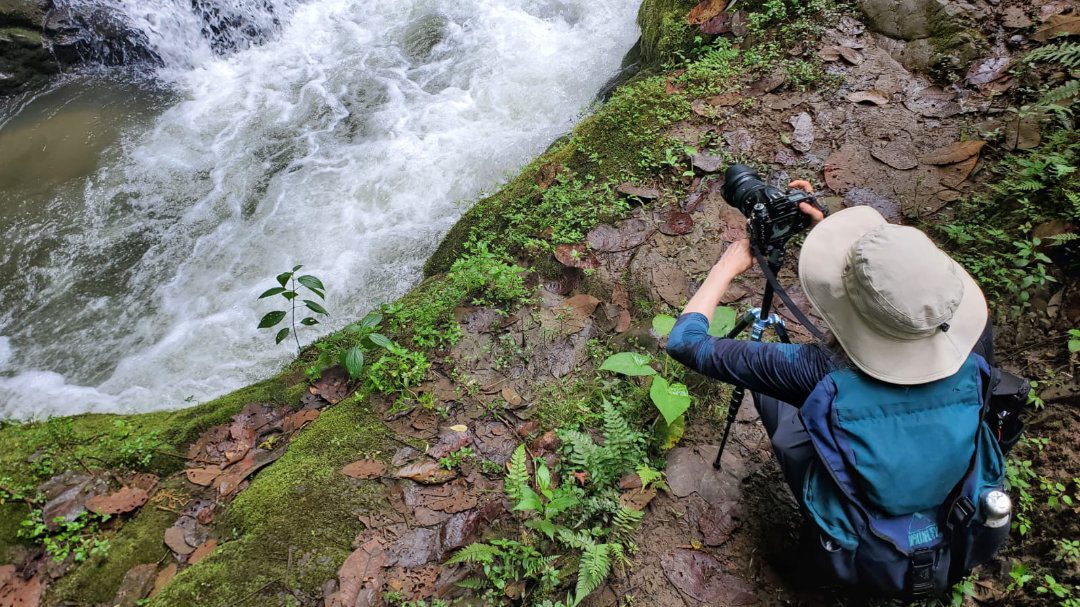
Tip #2 – Stretch Your Muscles
The best thing I ever did to help my MS was to begin a stretching regimen. It helps me hike better! In fact, it helps me manage my daily life better. There are two different kinds of stretching that I recommend if you want to add hiking to your list of activities.
First, make stretching a daily habit. I started with a simple illustrated manual published by the National MS Society. At first, I documented how much time I spent with a goal of stretching 20 minutes each day.
Eventually, those short sessions of stretching made my body want more. I introduced Yin Yoga (affiliate link), a form of yoga that focuses on the fascia in the body. This relatively new Yoga school encourages deep relaxation using tools like bolsters, blankets, and other supports (affiliate link) that allow your body to truly relax in positions designed to loosen the tightest muscles in your body.
For many people with autoimmune disorders, our muscles are often on high alert and easily cramped. When the fascia is well-stretched, our muscles have an easier time relaxing. The knots and adhesions that are common with many autoimmune disorders begin to melt away with consistent practice.
While I may never get rid of every problem area, I can definitely feel a difference in my body. This is especially true in my hips. And healthy hips are essential for healthy hiking.
Second, stretch after your hike! Especially on those days that you push a little further than usual. Perhaps it was a hilly day. Your calfs and glutes got a bigger workout than usual. Stretch them! Perhaps it was more distance and your ankles and feet are starting to ache. Stretch them!
Listen to your body and target those muscles that got the biggest workout. Take 10-20 minutes to stretch them out, even if it is a few hours after you hiked. Your body will love you for it!
Tip #3 – Use Hiking Poles
When I was younger, I used hiking poles on my most strenous hikes, especially those with steep climbs or descents. Then, when they broke, I never replaced them. I thought I could do without.
Then, about two years ago, a friend of mine suggested picking them up again. I was explaining to her how frustrated I was hiking. My husband was turning back on the trail to help me up and down far more often than I liked. But he had good reason. My balance was obviously off and I looked unsure when facing the slightest change in elevation.
I am ashamed to say it took me months before I followed her advice. Yet, once I did, I never looked back.
Hiking poles help me keep my balance. They have given me a renewed sense of confidence on the trail. They help me walk faster which, in turn, makes me stronger over time.
They help me when hiking uphill. I use the shorter height on the poles that allow me to plant a few inches in front and to the side of where my feet will land and push back on my poles when moving forward. This movement is similar to cross country skiing.
They also help me on the downhill. I use a longer length, plant the poles in front and to the side of where my feet will land and use them as brakes to help control my forward momentum without actually having to stop.
I highly recommend using lightweight, collapsible poles that you can quickly and easily adjust on the trail (affiliate link). My favorite pair comes from REI (affiliate link). I will never be without them again.
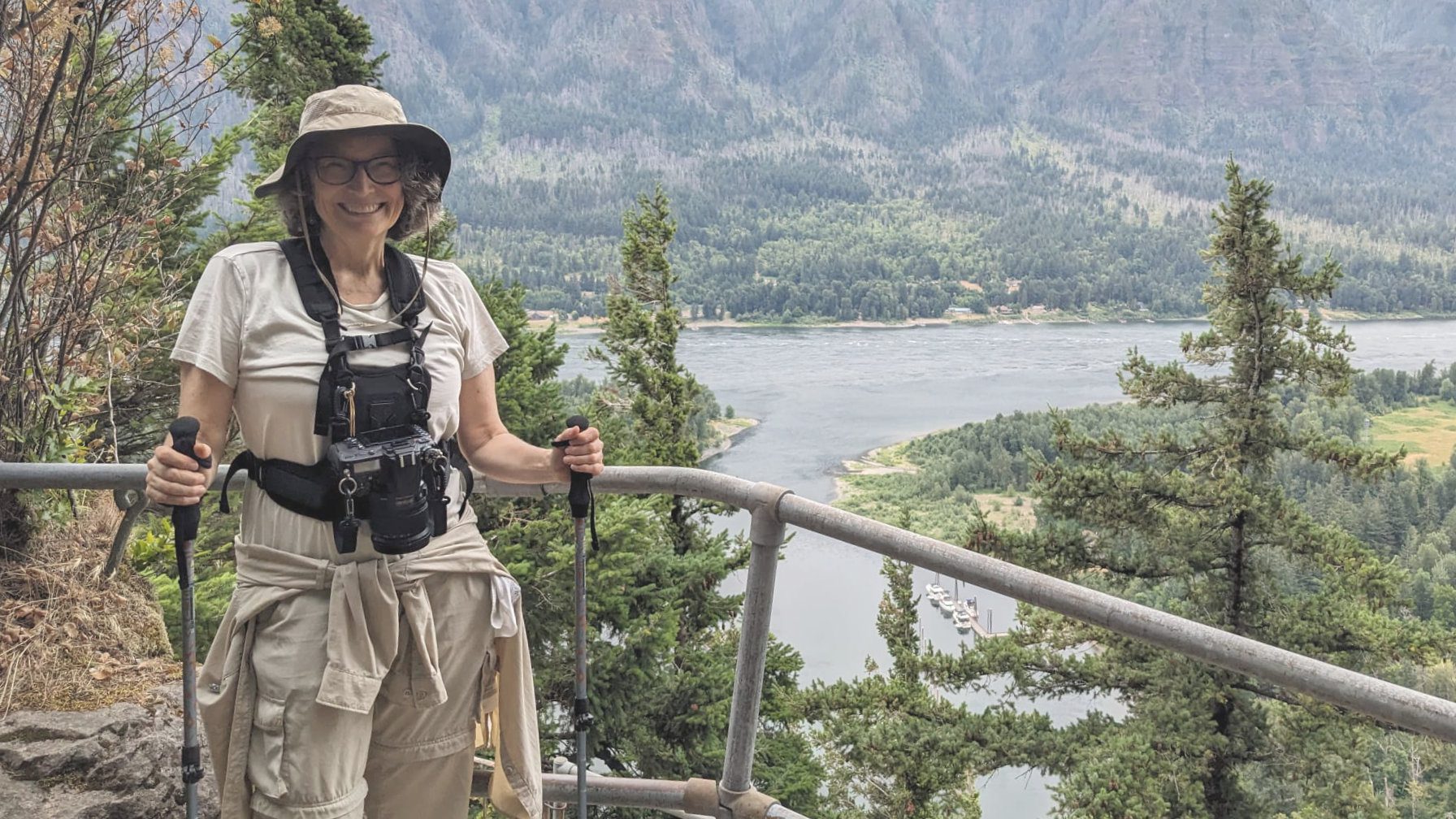
Tip #4 – Hydrate
I know that this tip sounds very basic. Of course hikers should hydrate. But it is even more important for hikers with MS to hydrate. That’s because symptoms of deydration can mimic symptoms of MS. In fact, dehydration exacerbates MS symptoms. No need to do that!
For myself, I carry a water bottle. My favorite bottle is a Swell (affiliate link), a gift from a good friend. I like it so much because it keeps cold water cold and hot water hot. Therefore, if I’m hiking on a cold day, I have the option to bring along herbal tea. And that’s important because I am less likely to feel thirsty when the weather is cold.
Some hikers prefer hydration backpacks (affiliate link). But before you buy one, be sure to read the next section on keeping cool.
Tip #5 – Stay cool
This is probably the most important of all the tips. So many of us with MS struggle with heat sensitvity. In fact, I used to be so afraid of the heat that I avoided going out if I thought I might even sweat a little. Fortunately, I’ve gotten beyond that point of my MS and am less afraid to exert myself when the temperature rises. Here’s how I manage.
First, I use a cooling vest (affiliate link). In fact, in most of the pictures in this article, I have one on underneath my clothing. I purchased one from Thermapparel, a company that specializes in creating vests for those of us with MS. The inserts are made of a chemical gel that keeps cool for up to a 3 or so hours at a time.
Second, I always wear a hat, even on shady days. A great sun hat allows are heads to sweat (important as this is one way our body regulates heat) while also protecting us from the sun. I wear it when its overcast because its always better to have it along than to leave it behind. My favorite sunhats are made by Columbia but there are many other brands that do as well (affiliate link). Just be sure to look for a full brim, a light color, and a strap that tightens down.
Third, I wear clothing appropriate for the conditions and quickly discard layers when I begin to feel warm. The problem with heat sensitivity is that once we begin to feel warm, it is often too late. It is better to begin a hike slightly cold than to begin sweating in the first stages. If in doubt, put that jacket in your backpack or wrap it around your waist. You can always put it on later if you feel too cool.
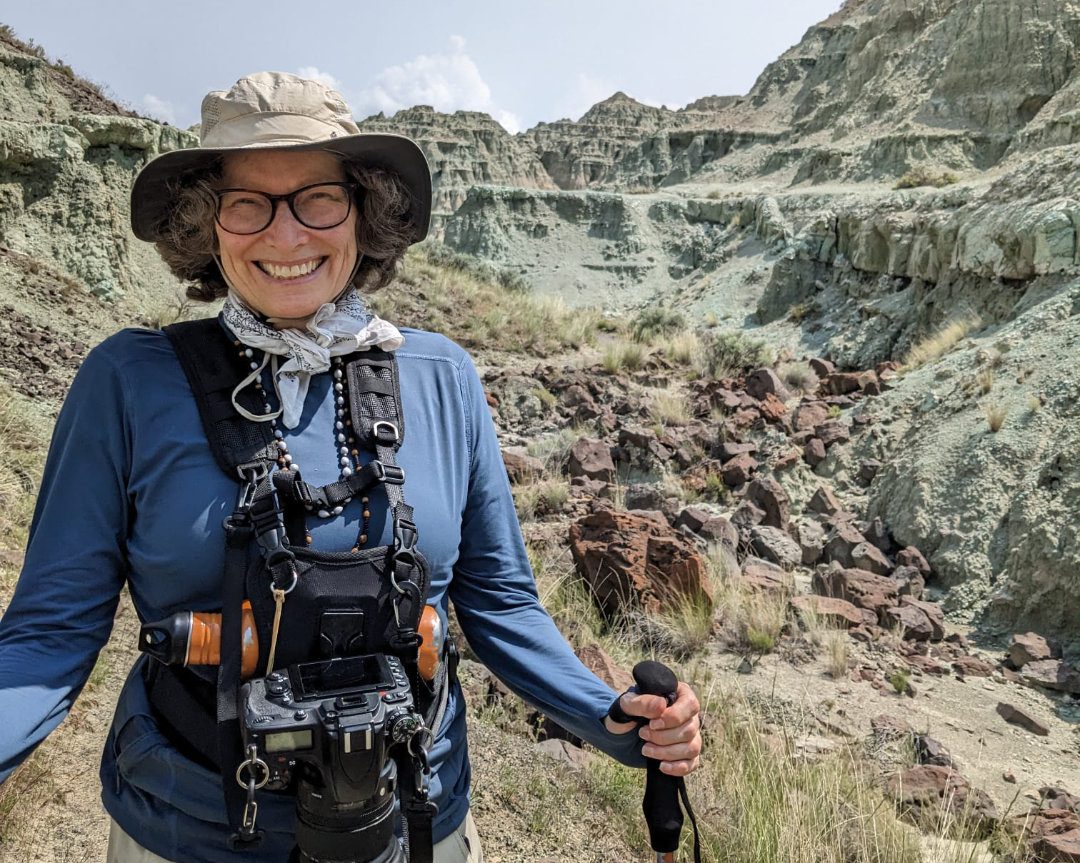
Tip #8 – Limit What You Carry
Limit what you carry says the woman with the camera equipment strapped to her body. Yes, you need to make sensible choices. On days when I’m not one hundred percent, I sometimes choose to leave my professional camera behind. Or leave behind my long lens, which is heavy. It is never an easy decision.
It has been easier to chose to bring my camera since purchasing my new camera harness (affiliate link). It distributes the weight of my camera across my shoulders instead of at my neck (regular camera strap) or one shoulder (side camera strap). It was an inexpensive purchase that has paid off in numerous ways. My camera seem to weigh less, my hands are free to use my hiking poles, and my camera stays tight to my body when climbing or scrambling on rocks.
Because I wear a camera harness and wear a cooling vest, I generally don’t carry a backpack. However, that’s when I also hike with my husband. He carries the snacks and sometimes a water bottle for me. You might have noticed in some of the pictures that my water bottle slides under my camera harness quite nicely.
If you do want a backpack, consider one that is lightweight and waterproof. My husband highly recommends a Zpack.
Tip #7 – Talk to your doctor
Last but not least, talk to your doctor.
If you are having trouble with your gait or struggling to get your legs to work properly, be sure to have that conversation with your doctor. You can ask for different interventions, depending on what you are trying to accomplish for your body.
They may offer physical therapy. If they don’t, ask for it! A good physical therapist can help pinpoint areas for improvement that your doctor or yourself may not even see.
For example, after observing my gait and watching me walk, my physical therapist gave me exercises to bulk up my butt muscles. I had no idea that I wasn’t even using them to walk. Ironically, I went to her for rehab after falling and hitting my knee. But, she was right. The exercises to strengthen my glutes have made me a better hiker overall.
Your doctor might also offer medication to help your brain better communicate with muscles. For a couple of years, I used medication to help with this to great effect. It helped my right leg feel less heavy. Unfortunately, I did begin to experience side effects, like back pain, so I decided to stop using it for a while. But it is a medication that I might turn to again.
There may be a medication that could help you. Remember to make the ask your doctor, “Do you recommend any medication to help me (insert your desire here)?”
Happy Hiking with MS!
I sincerely hope these tips help you become a better hiker. In my experience, spending time outdoors helps me manage the depression that comes with struggling with an autoimmune disorder. Hiking makes me a happier person. I hope it makes you happy too!

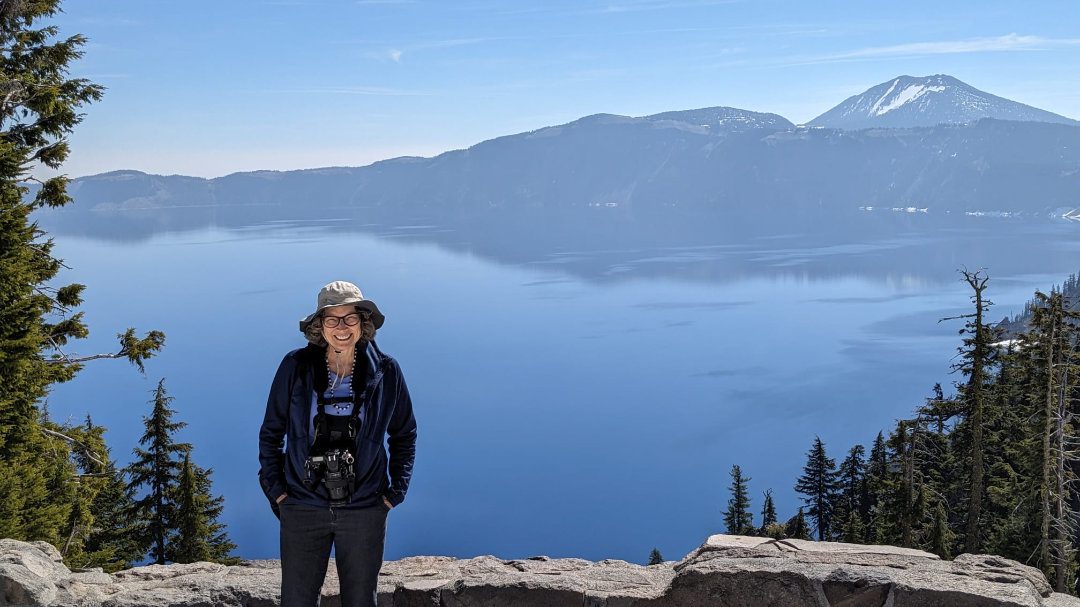
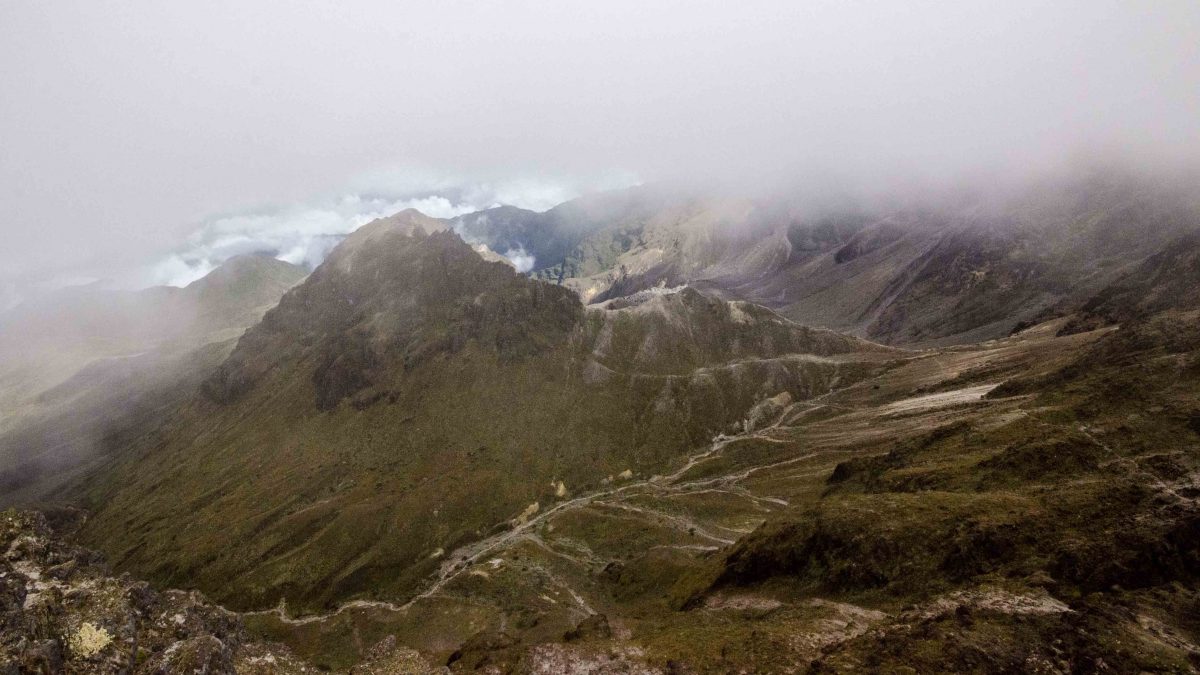
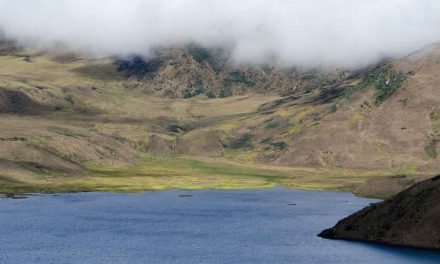

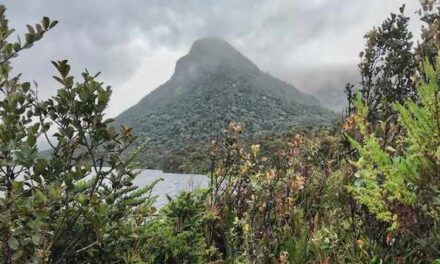

















Thank you for this helpful post, Angie. Your tip to “set manageable goals” really stood out. It’s a great reminder that hiking with MS is possible with the right mindset and preparation. Your advice is clear, encouraging, and much appreciated.
Thank you so much for your kind comment, Passang. It’s nice to hear from our readers!
I was living with MS for years before being officially diagnosed in 2021. I got annual MRIs, and I did not take any meds due to side effects. I had one flare up in 2021. My legs decided to a break, and I was numb from the waist down. I decided to try MS-4 from Uine Health Centre. The numbness and Muscle spasms went away after a couple of weeks, but it took almost 3 months to walk properly without a cane. In June, it will be four years without incident, and I am extremely happy that I made the decision to not take any meds and went for the MS-4 formula even though my neurologist got upset and one told me to quit my job because I will be disabled. Well, I am not disabled, I still refuse to take those meds, and I am doing just fine. Believe in yourself and go with your instincts. Doctors don’t know it all. I’m surprised a lot of people with MS haven’t heard of the MS-4 protocol, I got the treatment from uinehealthc entre . co m I am absolutely confident that this protocol offers a viable solution. I hope you find it helpful.
Hi Stella, I am very happy you found a protocol that works for you! If I have learned anything about MS, it is that each person struggling with the disease has their own journey. Solutions that work for some do not work for all. Perhaps your story will help someone else find a way to live better with this debilitating disease. Thank you for sharing!
Hi Angie,
I just wanted to thank you for your article here. I have been scouring the internet trying to find help in getting out into nature with a new disability and as a complete beginner to hiking in any real way. I know it will help me feel better, but I am afraid of getting injured or worsening things, Mostly, I have found success stories of people completing amazing hikes – with no details of how they overcame the challenges they faced. Your article gives practical details and links that are more helpful than you know, re: how to use hiking poles. And really, I ended up tearing up, because I learned more from this than I have from any of my doctors. Your note about why stretching is important is what I imagine a caring doctor would share.
Anyway, I just wanted to let you know that it meant a lot to me. Wish me luck, and happy hiking! 🙂
Warmly,
Meg
Hi Meg, I am so happy that you found this article. Your comment made me smile… and tear up a little as it took me back to when I was first diagnosed. Thank you for taking the time to write it!
Happy Hiking,
Angie